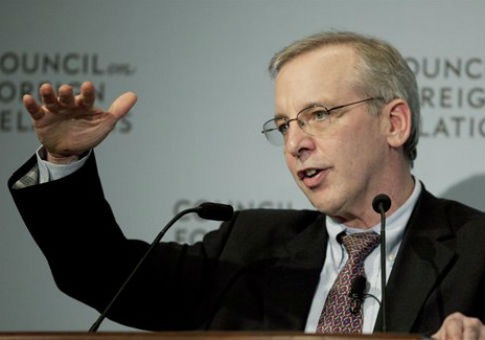New York Fed President William Dudley said he sees a smaller role for the Federal Reserve's monetary policy and a larger role for fiscal policy going forward.
In remarks to the Association for a Better New York on Monday, Dudley highlighted the limitations of monetary policy, noting that the Federal Reserve has kept interest rates low for some time, which has prevented it from being able to cut rates further in the face of an economic downturn.
Dudley said the effects of the Fed's unconventional use of tools like quantitative easing, the large-scale purchase of Treasury and mortgage-backed securities, and so-called "forward guidance" have been limited.
"These limits suggest that fiscal policy may need to play a greater role in stabilizing the economy than has been the case in past decades," Dudley said.
Dudley said he would make monetary policy less "accommodative" over time, referring to attempts to spur economic growth by expanding the money supply.
"If the economy grows at a pace slightly above its sustainable long-term rate, as I expect, the labor market should gradually tighten further, and the resulting pressure on resources should help push inflation toward our 2 percent objective over the next year or two," Dudley said. "Assuming the economy stays on this trajectory, I would favor making monetary policy somewhat less accommodative over time by gradually pushing up the level of short-term interest rates."
Dudley also said he believes the spike in the stock market following the presidential election is a reflection of expectations that there will be less risk to potential growth in the economy. He predicted that President-elect Trump will focus on fiscal policy by spending more.
"Following this year's election, we have seen relatively large movements in financial asset prices," the Fed governor said. "My personal interpretation of these developments is that market participants now anticipate that fiscal policy will turn more expansionary and that the [Federal Open Market Committee] will likely respond by tightening monetary policy a bit more quickly than previously anticipated."
"Let me emphasize here that I do not view the recent shift in financial market conditions as one that should prompt great concern," he said. "It is important to distinguish between a tightening of financial conditions that is driven by an increase in risk aversion from one that is driven by a greater likelihood of stronger near-term aggregate demand and less downside risk to the growth outlook. We experienced the former at the beginning of 2016, while the latter reflects current expectations of greater fiscal policy stimulus."
Dudley said fiscal stabilizers like cuts in payroll taxes and extensions of unemployment compensation could provide support during economic downturns.
"The point that I want to highlight is that robust automatic fiscal stabilizers would complement monetary policy, and take some pressure off of the Federal Reserve to undertake extraordinary measures in situations where there is little scope for cutting short-term interest rates," Dudley said.
